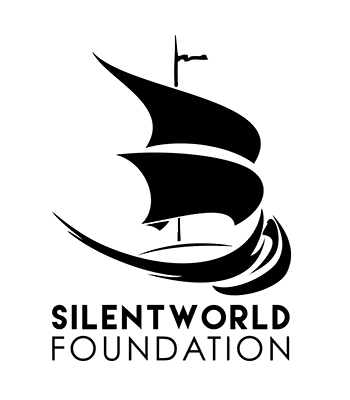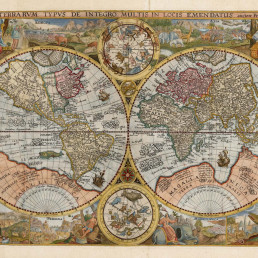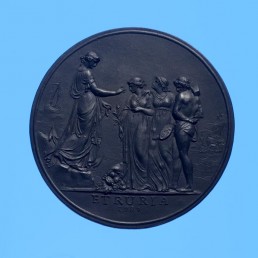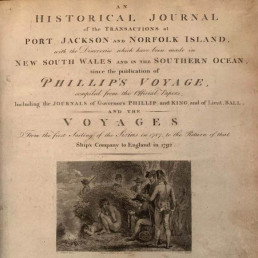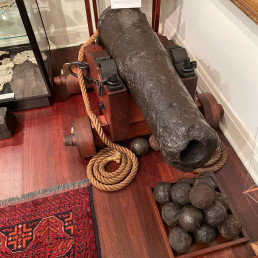
Name/TitleMelbourne from the South Side of the Yarra Yarra
About this objectWilbraham Liardet was so fascinated by the early settlement of Melbourne that, late in life, he began making notes on its history, preparing some forty watercolours based on his recollections for its illustration.
Liardet had emigrated in 1839, establishing himself and his large family on a strip of beach that later became Port Melbourne. While engaged on various enterprises, he witnessed the beginnings of settlement along the Yarra River.
Although this work has been given an approximate date of 1839, it is possibly a later recollection. Nonetheless, it is recalled with a direct and strong sense of actuality evident in the crudeness of the dwellings, a result of their hasty erection in the first days, and the structured flag pole surrounded by goods recently off loaded from the boats which brought in the first hardy settlers. The mood of pioneering achievement against the privations of nature is furthered by the starkness of the scene with its low horizon and absence of trees. The actions of the various group and individual figures give the work an added sense of occasion and engagement, so characteristic of Liardet’s art.
MakerWilbraham Liardet - Artist
Maker RoleArtist
Date Madec1869
Period19th century
Medium and MaterialsPaper, watercolour
Place MadeMelbourne, Australia
Object TypeLandscape Paintings
Object numberSF001447
Copyright Licence![]() Attribution - Non-commercial - No Derivatives (cc)
Attribution - Non-commercial - No Derivatives (cc)
Explore by category
Maps and Charts
Date range: 1541-1836
Ship Models
Date range: 1629-1890
Maritime Paintings
Date range: 1793-1849
Manuscripts and Ephemera
Date range: 1768-c1850
Medallions & Convict Tokens
Date range: 1619-1880
Landscapes
Date range: 1768-c1850
Books
Date range: 1694-c1850
Currency and Shares
Date range: 1624-1823
Printed Material
Date range: 1541-1836
Maritime Archaeology
Date range: 1629-1854
Curator's corner
New acquisitions, staff favourites and curios
The mug is decorated with an underglaze and a blue transfer print. On the body, it is titled ‘Emigrants to Australia’. This type of body and glaze was discontinued by 1840. Comparison of the handle shape and the profile of the foot, point to the attribution of manufacture by the Davenport Factory.
Delta was a ship-rigged vessel with two decks and three masts. It was built in Dordrecht, Netherlands in 1839 at the shipyard of Jan Schouten and registered in the same port. Its hull was constructed of oak and sheathed in ‘yellow metal’. Delta was owned by H. van der Sande at the time of its loss and was engaged as a cargo trader.
The Delta carried 29 crew and passengers, while sailing from Melbourne to Batavia in ballast when wrecked at Kenn Reefs on 30 May 1854 whilst under the command of Captain J.G. Kunst. This vessel loss supports the pattern of shipwrecks located on a well-travelled shipping route that was poorly charted until the mid-nineteenth century. The crew of the Delta could see four other shipwrecks at Kenn Reefs at the time of their vessel’s loss.
Important image of a ship associated with Matthew Flinders, that would shortly become one of the most famous early shipwrecks in eastern Australian waters. This is a fine ship’s portrait, by one of the great exponents of the art
